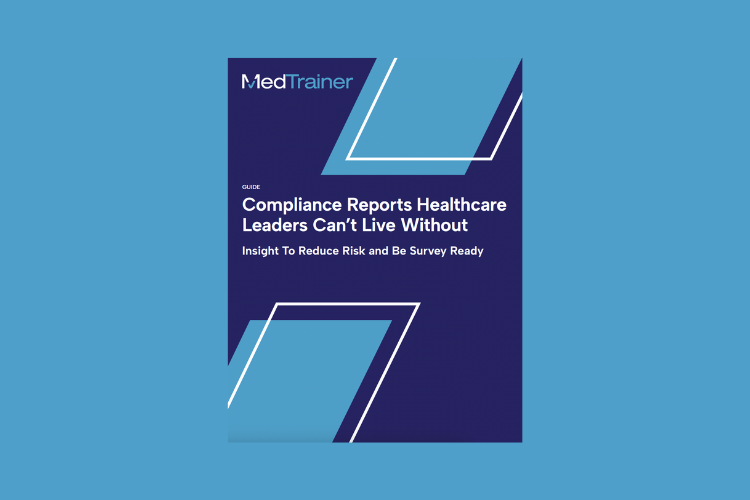Incident reporting in healthcare is a critical part of compliance. It’s not just about cataloging mistakes — it’s about understanding why they happened and taking steps to prevent them from happening again.
What Is an Incident Report?
Understanding the importance of incident reporting starts with understanding what, exactly, an incident is. An incident is classified as any condition, occurrence, or situation in which disruption can be caused in a workplace. Generally, incidents and the disruptions they cause also imply the potential for harm — especially in healthcare facilities.
An incident report is thorough documentation of the incident, including all relevant details that caused it and any outcomes that stemmed from it. The key to a good incident report is completeness and accuracy, and that means documenting as much information as possible:
- Date of incident
- Time of incident
- Type of incident
- Location of incident
- Name of individual(s) affected
- Name of witnesses to the incident
- Witness reports
- A detailed description of the incident
- Any injuries sustained
- Photo evidence of the incident
All of this information compiled together in a uniform way constitutes an incident report. Compliance-minded organizations will have a standard incident reporting form that includes sections for all these details, to ensure accuracy and completeness in reporting, as well as quick reference for when the time comes to address the incident.
See how an online incident reporting system can help your healthcare organization.
Common Examples of Incidents
Incidents in the workplace can happen at any time; however, there’s a higher risk of them wherever noncompliance exists. Compliance standards are safeguards for preventing disruption and when they’re not followed, incidents aren’t far behind.
There are also different types of incidents to consider. Here’s a look at some of the most common, and what they look like in the workplace:
- Unanticipated incidents are unexpected and often result in harm to a person or property. Examples of an unanticipated incident in a healthcare setting would include things like a needle stick incident or an electrical shock from faulty equipment.
- Avoided incidents are those in which no one was hurt, but could have been. Examples of avoided incidents are near misses, such as slipping on a wet floor or writing the wrong dosage on a patient chart but catching it before it’s administered.
- Adverse incidents in healthcare are the result of reactions to medication or a procedure. For instance, if a patient doesn’t disclose an allergy and has a reaction to latex, or if they have a panic attack due to claustrophobia in an MRI machine.
- Awareness incidents are those in which no harm is done, but there needs to be better communication or awareness about the potential for harm. In most cases, the simplest example of these incidents is simple noncompliance with a policy.
In all of these situations, documentation is critical. Without it, there’s no record of the incident, no way of understanding it, and worse, no way of preventing it from getting worse.
What Is the Purpose of an Incident Report?
The purpose of an incident report is to draw attention to disruption (and its outcomes) as a way of preventing or minimizing similar future incidents. It’s also an important step for correcting whatever led to the incident.
Think of incident reports as a continuous process improvement tool. When you have clear documentation of the situation (who, what, when, where, why) you can start to look at how to prevent it in the future. Sometimes that means individualized employee training; other times, it means adapting processes to cover gaps in compliance. Whatever the path toward improvement, it starts with the information documented in an incident report.
Why Are Incident Reports Important for Compliance?
Incident reports are also incredibly valuable in the compliance reporting process. Information provided by incident reports allows OSHA, employees, and employers to protect employees, recognize potential hazards, and adequately assess the safety of any workplace. Incident reports draw attention to current rules and standards, while also building upon them to transform good organizations into great organizations.

The best compliance and credentialing reports to surface critical insights and keep you survey ready.
Say, for example, you find your facility the subject of an OSHA audit. If that audit turns up a higher-than-normal instance of slips, trips, and falls, the first thing the auditor will ask is how you’re addressing that problem. Incident reporting documentation can tell a story — either you’re taking action to address the cause of these incidents, or you’re not. If you can show that you implemented a new policy and that the number of trip and fall incidents declined afterward, it’s a vote of confidence toward compliance.
Digital Incident Reporting
Like most of the healthcare industry, incident reporting can benefit tremendously from digitization. Digital incident reporting makes it easier for employees to report incidents; they can log incidents, take photos, and submit documentation using a mobile device, wherever and whenever the situation arises. Moreover, digital records are easier to store, search, manage, and evaluate, which improves the efficacy of any organization’s compliance approach.
Using Incident Reports To Create a Culture of Safety
It’s easy to look at incident reporting as a punishment or as a repercussion. This isn’t the case! Incident reporting exists to help shed light on how to avoid mistakes in the future. By taking steps to document and address mistakes, your organization becomes proactive and responsible. NOT documenting incidents is negligent and careless, and will only lead to more incidents in the future.
The goal of a good incident reporting policy is to build a culture of safety. Employees shouldn’t fear incident reports; they should see them as an opportunity to improve. Documenting and addressing problems gives them agency and, as a result, the confidence to do their best work with lessons learned behind them.
When organizations make it easy and effortless to report incidents, they empower employees to learn from their mistakes and grow professionally as a result.
Continuous Improvement Never Stops
Bringing your incident reports online can open the door to so many opportunities for healthcare facilities to improve their practices, processes, training, and employee knowledge. Most large healthcare organizations have already taken this step, using enterprise-grade compliance software, such as MedTrainer. With the ability to identify trends, take action more quickly, and track everything in one platform, incident reports become much more valuable.
Put your organization on the path to continuous improvement. Find out how MedTrainer improves incident reporting.
 Learning
Learning